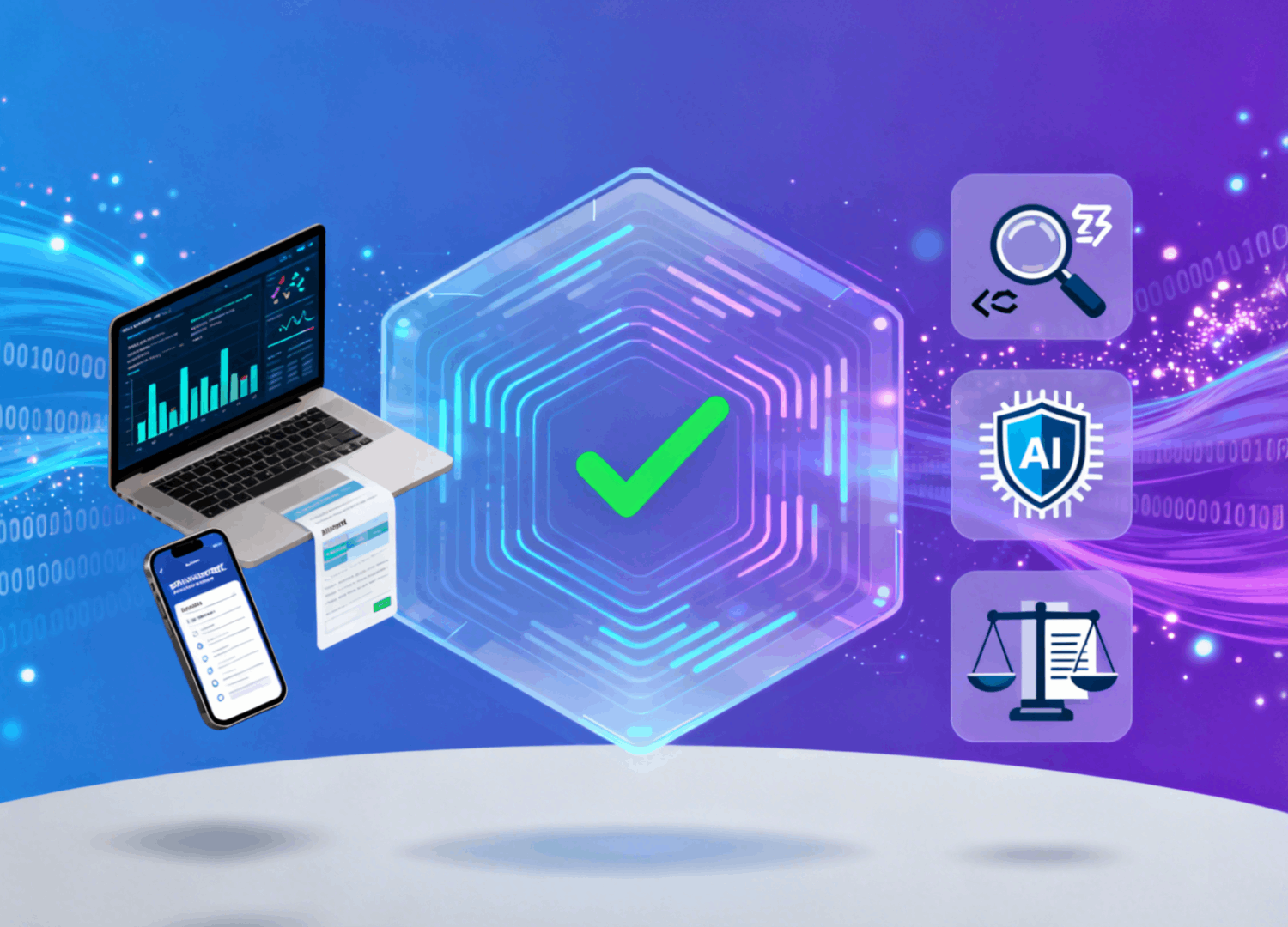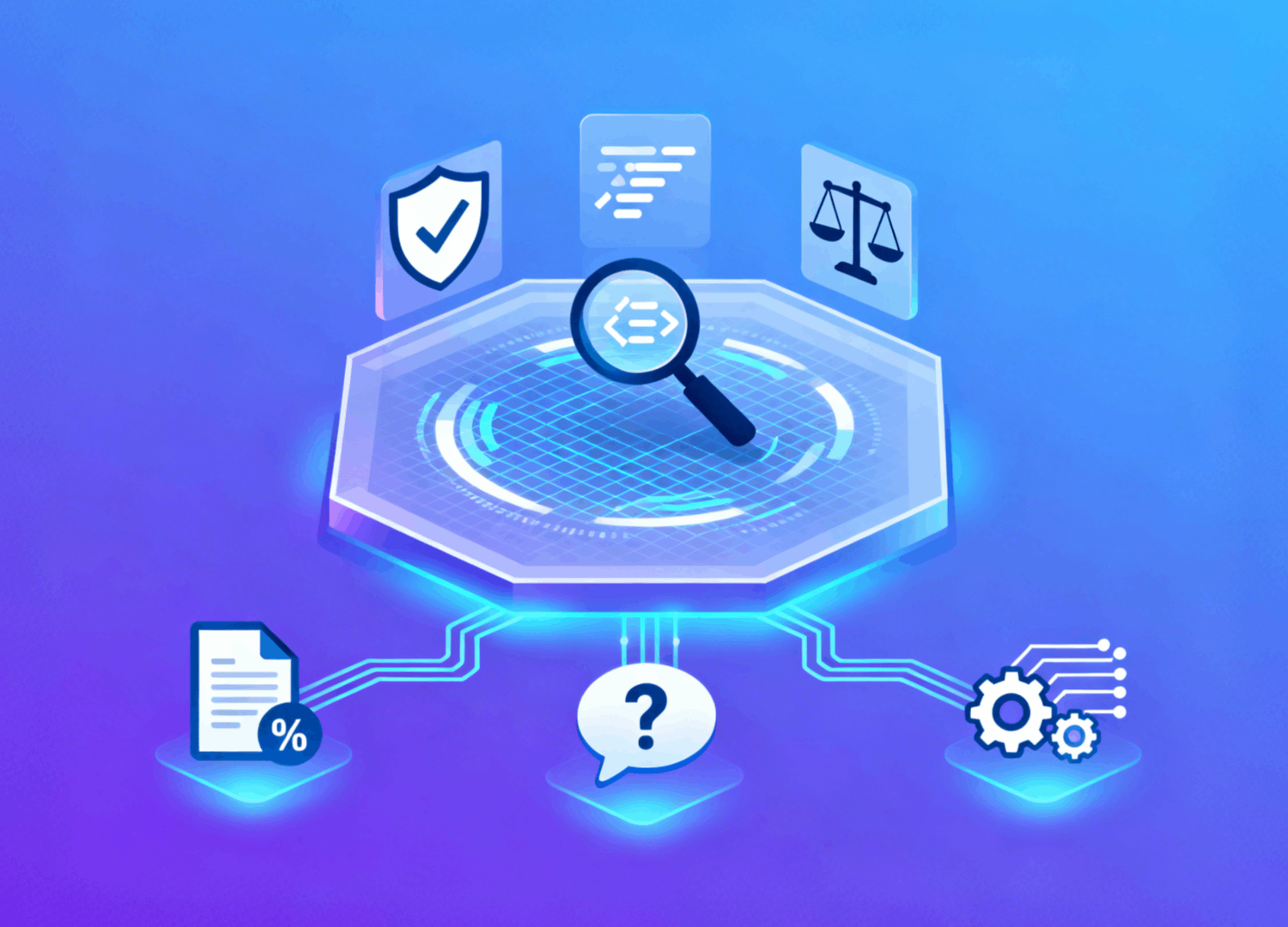
Top AI Content Detectors: Essential Tools for 2025
With the proliferation of AI-generated content, tools like AI Content Detector, AI Checker, and Chat...
In today's digital landscape, distinguishing between human-generated and AI-created content has become increasingly crucial. Whether you're an educator, content creator, or business professional, finding the best AI detector free tools can help maintain content authenticity without breaking the budget. At aigcchecker.com, we understand the importance of reliable AI detection, which is why we've compiled this comprehensive guide to help you navigate the world of free AI detection tools.
As artificial intelligence continues to evolve, the need for accurate content verification has never been more pressing. From academic institutions combating AI-generated essays to businesses ensuring authentic marketing content, free AI detectors serve as the first line of defense against potential misuse of AI technology.
The best AI detector free tools are sophisticated software applications designed to analyze text, images, and other content types to determine whether they were created by artificial intelligence or humans. These tools employ advanced algorithms, machine learning models, and pattern recognition techniques to identify telltale signs of AI generation.
Content verification through AI detection serves multiple critical purposes in our digital ecosystem. For educators, it helps maintain academic integrity by identifying potentially AI-generated assignments. Content marketers use these tools to ensure their team's output remains authentic and original. Publishers rely on AI detectors to verify the authenticity of submitted articles, maintaining their credibility and editorial standards.
The technology behind free AI detectors typically involves analyzing various linguistic patterns, sentence structures, and stylistic elements that differ between human and AI writing. These tools examine factors such as perplexity (how predictable the text is) and burstiness (variation in sentence complexity), which tend to differ significantly between human and machine-generated content.
Explanation: Text-based AI detectors are the most common type of free AI detection tools available today. These specialized applications analyze written content by examining linguistic patterns, vocabulary usage, and sentence structures that typically distinguish AI-generated text from human writing. They work by comparing input text against massive databases of known AI and human writing samples.
Advantages: Text-based detectors offer several compelling benefits. They provide instant results, often processing thousands of words in seconds. Most free versions support multiple languages, making them accessible globally. These tools are particularly effective at identifying content from popular AI models like GPT-3, GPT-4, and Claude. They're also user-friendly, typically requiring only a simple copy-paste action to analyze content.
Limitations: Despite their utility, text-based detectors face notable challenges. They can produce false positives, especially with technical or formulaic writing styles. Short texts under 100 words often yield unreliable results. Additionally, sophisticated AI content that has been heavily edited by humans can sometimes evade detection. Free versions typically impose word count limits, restricting analysis of longer documents.
Safety Considerations: When using text-based AI detectors, users should be aware that some free tools may store submitted content for training purposes. It's crucial to avoid submitting sensitive or confidential information. Always review the privacy policy of any free AI detector before use, and consider whether the tool complies with relevant data protection regulations like GDPR.
Explanation: Image and deepfake detectors represent a crucial category of AI detection tools focused on visual content. These sophisticated systems analyze pixel patterns, compression artifacts, and facial inconsistencies to identify AI-generated images, videos, and deepfakes. They employ computer vision algorithms and neural networks specifically trained to spot synthetic media.
Advantages: Visual AI detectors excel at identifying manipulated media that could be used for misinformation or fraud. They can detect subtle inconsistencies invisible to the human eye, such as unnatural lighting patterns or facial symmetry issues. Many free tools support various image formats and can process both photographs and videos. They're particularly valuable for journalists, fact-checkers, and social media platforms combating fake news.
Limitations: Image detection tools face unique challenges. High-quality deepfakes created with advanced techniques can sometimes bypass detection. Processing video content requires significant computational resources, limiting free tool capabilities. Resolution and compression can affect accuracy, and newer AI generation methods constantly challenge existing detection algorithms.
Safety Considerations: Users should be cautious about uploading personal photos or sensitive visual content to free online detectors. Some services may retain images for analysis or improvement purposes. Always verify that the platform uses secure connections (HTTPS) and understand their data retention policies before uploading any visual content.
Explanation: Multi-modal AI detection platforms represent the most comprehensive approach to content verification, combining text, image, audio, and video analysis capabilities in a single interface. These platforms leverage multiple detection algorithms simultaneously, providing a holistic view of content authenticity across different media types.
Advantages: The primary advantage of multi-modal platforms is their versatility. Users can verify various content types without switching between different tools. These platforms often provide more accurate results by cross-referencing findings across multiple detection methods. They're ideal for comprehensive content audits and offer streamlined workflows for organizations dealing with diverse media types.
Limitations: Free multi-modal platforms typically offer limited functionality compared to their paid counterparts. Processing multiple content types requires substantial server resources, leading to slower analysis times or queue systems. The complexity of these platforms can make them less intuitive for casual users, and free tiers often restrict the number of analyses per day or month.
Safety Considerations: Given the breadth of data these platforms process, privacy concerns are amplified. Users should carefully review terms of service and understand how different types of content are handled. Some platforms may use submitted content to improve their algorithms, potentially exposing sensitive information to broader analysis.
Explanation: Browser extensions for AI detection offer convenient, real-time content verification directly within your web browsing experience. These lightweight tools integrate seamlessly with popular browsers like Chrome, Firefox, and Edge, allowing users to check content authenticity without leaving the webpage they're viewing.
Advantages: The convenience factor of browser extensions cannot be overstated. They enable instant verification of online content with a simple right-click or toolbar button. Many extensions work across multiple websites, including social media platforms, news sites, and educational portals. They're particularly useful for students and researchers who need to verify sources quickly while conducting online research.
Limitations: Browser extensions often have reduced functionality compared to standalone applications. They may slow down browser performance, especially on older devices. Free extensions typically limit the number of daily checks and may not support all website formats. Some extensions require extensive permissions, potentially accessing all browsing data.
Safety Considerations: Installing browser extensions requires careful consideration of permissions requested. Some extensions may track browsing habits or access data across all websites. Users should only install extensions from reputable developers, check reviews, and regularly audit installed extensions. Be particularly cautious with extensions requesting access to all website data or clipboard contents.
Selecting the right best AI detector free tool requires careful evaluation of several critical factors. First and foremost, accuracy should be your primary consideration. Look for tools that provide transparency about their detection methods and accuracy rates. Many reputable free AI detectors publish their performance metrics and regularly update their algorithms to keep pace with evolving AI models.
User interface and ease of use play crucial roles in tool selection. The best free AI detectors offer intuitive interfaces that don't require technical expertise. Consider whether you need a simple web-based tool for occasional checks or a more robust solution with API access for regular use. Tools like those available at aigcchecker.com strike an excellent balance between functionality and user-friendliness.
Language support is another vital consideration, especially for global users. While English detection is standard, many free tools now support multiple languages including Spanish, French, German, Chinese, and Arabic. Verify that your chosen tool supports the languages you work with most frequently.
Privacy and data security cannot be overlooked when selecting a free AI detector. Review the tool's privacy policy to understand how your content is processed, stored, and potentially used. Reputable services clearly state their data handling practices and offer options to delete submitted content after analysis.
Consider the tool's limitations and restrictions. Free versions often impose daily or monthly usage limits, maximum text lengths, or restricted features. Evaluate whether these limitations align with your needs. Some tools offer generous free tiers suitable for individual users, while others are more restrictive, pushing users toward paid upgrades.
The global landscape of free AI detection tools is diverse and rapidly evolving. In North America, tools like GPTZero and Copyleaks have gained significant traction in educational institutions. GPTZero, developed specifically for educators, offers robust detection capabilities with a focus on academic integrity. It provides detailed analysis reports highlighting potentially AI-generated sections within documents.
European users often prefer GDPR-compliant tools that prioritize data privacy. Content at Scale and Originality.ai have established strong presences in the European market by offering transparent data handling practices and servers located within the EU. These platforms provide comprehensive detection capabilities while ensuring compliance with strict European privacy regulations.
In the Asia-Pacific region, localized tools supporting Asian languages have emerged as popular choices. Many of these tools offer superior detection for languages like Mandarin, Japanese, and Korean, which present unique challenges for AI detection due to their linguistic structures. Regional platforms often integrate with popular Asian social media and messaging platforms, providing seamless verification workflows.
Latin American markets have seen growth in Spanish and Portuguese-optimized detection tools. These regional solutions understand the nuances of local dialects and writing styles, providing more accurate results than generic global tools. Many offer free tiers specifically designed for educational institutions and small businesses in developing economies.
The Middle East and Africa have witnessed the emergence of Arabic-language AI detectors addressing the unique challenges of right-to-left scripts and Arabic dialectical variations. These tools often incorporate cultural and contextual understanding that global platforms may lack, resulting in more accurate detection for regional content.
While free AI detection tools provide valuable services, users must understand their inherent risks and limitations. The most significant concern is accuracy variability. Free tools often use simplified algorithms compared to premium versions, potentially leading to higher rates of false positives and false negatives. This can result in human-written content being incorrectly flagged as AI-generated, causing unnecessary concern or disputes.
Data privacy represents another substantial risk. Some free tools may monetize their services by collecting and analyzing user data, potentially using submitted content to train their models or sharing aggregated data with third parties. Users submitting sensitive or proprietary content should be particularly cautious about which free tools they trust with their data.
The rapid evolution of AI technology poses an ongoing challenge for free detection tools. As AI models become more sophisticated, they produce content that's increasingly difficult to distinguish from human writing. Free tools may lag behind in updating their detection algorithms, reducing their effectiveness against newer AI models. This technological arms race means that today's effective detector might be obsolete within months.
Over-reliance on AI detection tools can lead to problematic outcomes. These tools should be viewed as assistive technology rather than definitive arbiters of content authenticity. Important decisions, such as academic penalties or content rejection, should not be based solely on AI detector results without human review and consideration of context.
Technical limitations also affect free tool performance. Many struggle with specialized content types, such as technical documentation, legal texts, or creative writing, where unusual style patterns might trigger false positives. Additionally, free tools often lack the computational resources to perform deep analysis, resulting in surface-level detection that sophisticated AI content can evade.
The quest for the best AI detector free tools represents a critical challenge in our increasingly AI-integrated world. As we've explored throughout this comprehensive guide, free AI detection tools offer valuable capabilities for content verification across text, images, and multimedia formats. While these tools come with certain limitations and risks, they remain essential resources for educators, content creators, businesses, and individuals committed to maintaining content authenticity.
The landscape of AI detection continues to evolve rapidly, with new tools and technologies emerging regularly. Success in using these tools effectively requires understanding their capabilities and limitations, choosing the right tool for your specific needs, and maintaining a balanced approach that combines technological assistance with human judgment.
As AI technology advances, so too must our detection methods. The free tools available today provide a strong foundation for content verification, but users should stay informed about new developments and be prepared to adapt their strategies. Regular testing and comparison of different tools ensure you're using the most effective solutions available.
Remember that AI detection is not about opposing technological progress but rather ensuring its responsible use. By leveraging free AI detection tools wisely, we can maintain the integrity of human creativity while benefiting from AI's capabilities. For those seeking a reliable, user-friendly solution for AI content detection, we recommend exploring the comprehensive features available at aigcchecker.com, where cutting-edge detection technology meets accessibility and ease of use.
A best AI detector free is a no-cost software tool designed to analyze content and determine whether it was created by artificial intelligence or a human. These tools work by examining various linguistic patterns, statistical markers, and stylistic elements that typically differentiate AI-generated content from human writing. They use machine learning algorithms trained on vast datasets of both AI and human-created content to identify telltale signs of AI generation, such as repetitive patterns, unusual word choices, or unnaturally consistent writing styles. The detection process typically involves comparing the input text against known patterns and providing a probability score indicating the likelihood of AI involvement.
Free AI detectors offer several advantages that make them attractive options for many users. They provide immediate access to AI detection capabilities without financial commitment, making them ideal for students, individual content creators, and small businesses with limited budgets. Free tools allow users to test different detection methods and find what works best for their specific needs before potentially investing in premium solutions. Many free detectors offer sufficient functionality for basic content verification needs, including accurate detection of common AI models and support for multiple languages. Additionally, using free tools for routine checks can be cost-effective when dealing with occasional verification needs rather than high-volume professional requirements.
Selecting the appropriate free AI detector for global use requires considering several key factors. First, ensure the tool supports multiple languages relevant to your needs, as global content often spans various linguistic contexts. Look for platforms with servers in multiple regions to ensure fast, reliable access regardless of your location. Check that the tool complies with international data protection regulations like GDPR, especially if handling sensitive content. Consider the tool's accuracy across different content types and AI models, reading user reviews from various countries to gauge real-world performance. Finally, evaluate whether the free tier's limitations align with your usage patterns and whether the tool offers consistent updates to keep pace with evolving AI technology.
Free AI detectors can provide sufficient accuracy for many professional applications, though their suitability depends on specific use cases and requirements. Many free tools achieve detection accuracy rates of 80-90% for common AI models, which is adequate for initial screening and routine checks. However, professionals requiring higher accuracy for critical decisions, such as academic institutions or publishers, may need to supplement free tools with additional verification methods or consider premium options. The key is understanding that free detectors work best as part of a comprehensive content verification strategy rather than as standalone solutions. Regular calibration and testing against known samples can help professionals gauge whether a free tool meets their accuracy requirements.
Several common mistakes can undermine the effectiveness of AI detection tools. The most critical error is treating detector results as absolute truth rather than probability indicators requiring human interpretation. Avoid submitting sensitive or confidential information to untrusted free tools without reviewing their privacy policies. Don't rely on a single detection tool for important decisions; cross-reference results from multiple platforms for better accuracy. Be cautious about using detectors on specialized content like technical writing, poetry, or code, where unusual patterns might trigger false positives. Additionally, avoid making accusations or taking punitive actions based solely on AI detector results without considering context and allowing for human review. Remember that AI detectors are tools to assist human judgment, not replace it entirely.

With the proliferation of AI-generated content, tools like AI Content Detector, AI Checker, and Chat...

With the popularity of AI writing tools, more and more students are using ChatGPT to generate essays

AI detection technology has become increasingly crucial in our digital landscape, where the line bet...

This article explores the rise of free AI detectors, their accuracy limits, and how they help identi...

As artificial intelligence continues to revolutionize content creation, the need to distinguish betw...